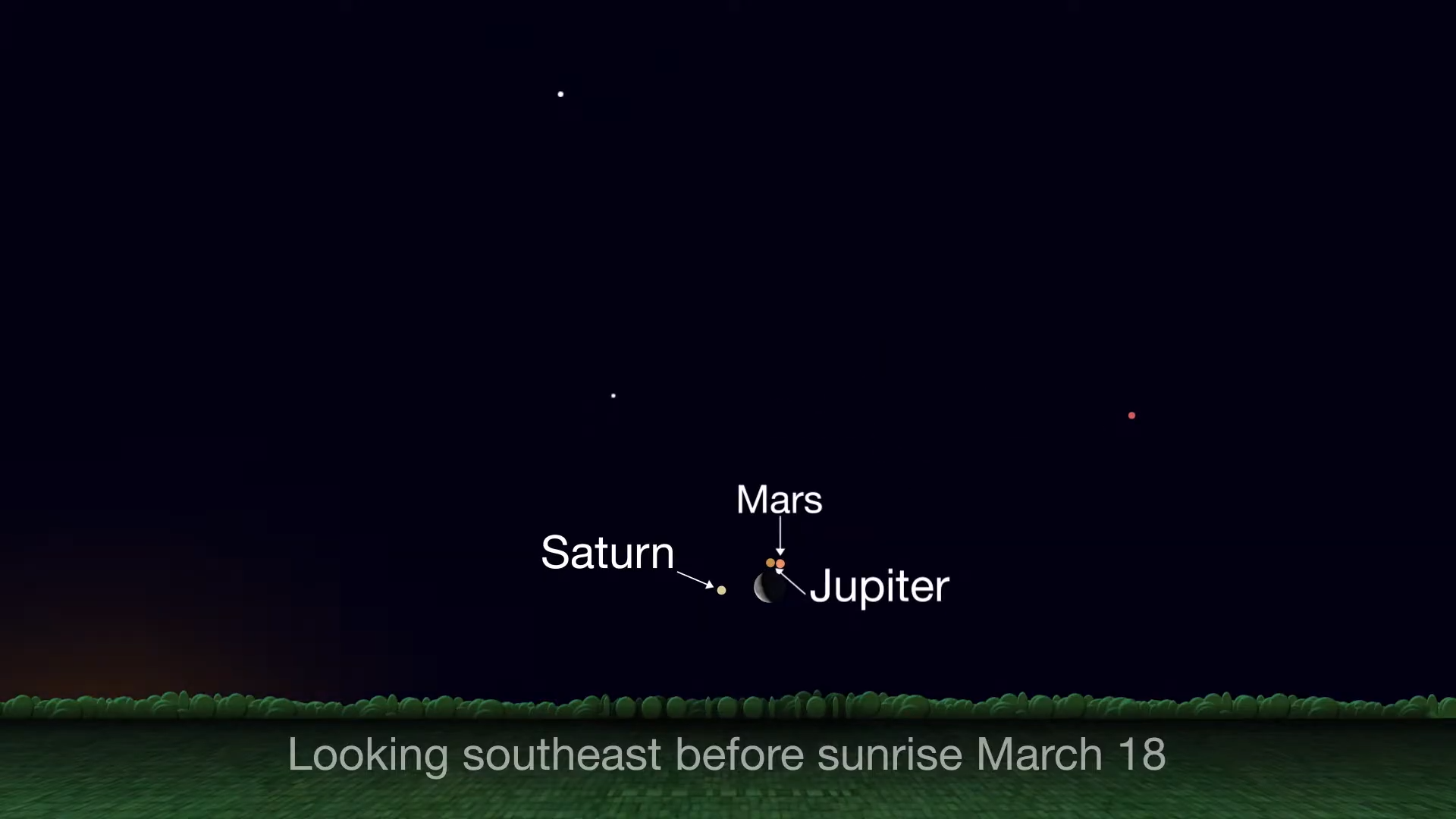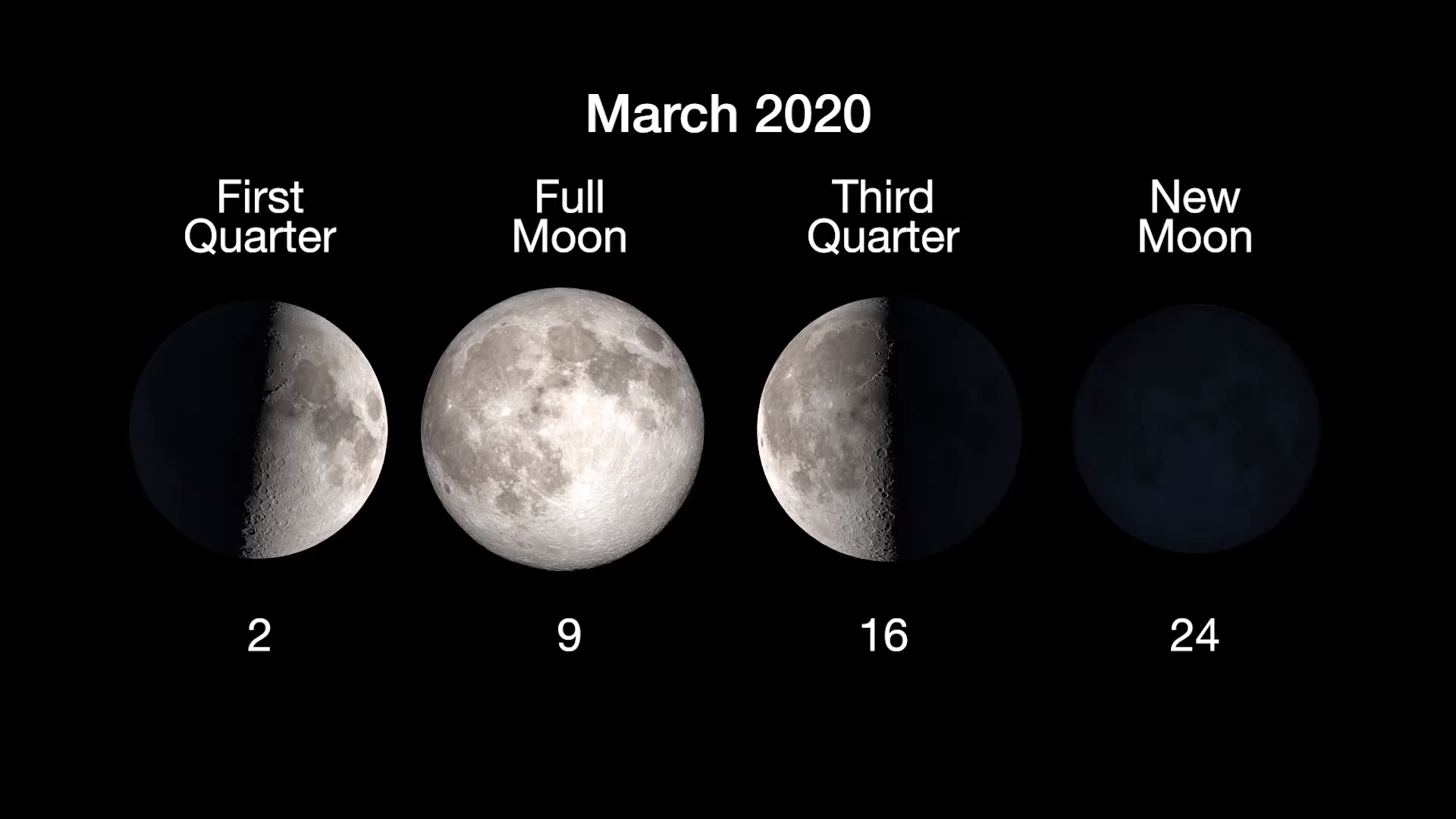What’s Up: March 2020 [Video]
| Credit | NASA/JPL-Caltech |
|---|---|
| Language |
|
Looking for astronomy highlights for March 2020? This month, early risers enjoy a planetary grouping of Mars, Jupiter and Saturn in the early morning sky. Plus a closer look at Sirius, the brightest star in the sky, and spot a lovely trio at sunset on March 28th.
› Details and Sky Charts
Transcript
What's Up for March? Planet-palooza in the morning, a "Sirius" look at the Dog Star, and an evening trio at the end of the month.
If you're up early any morning during March, you'll want to go out and look toward the east to catch a lovely grouping of Mars, Jupiter and Saturn. The three planets are visible before dawn throughout the month.
At the beginning of March they form a line, with Mars located here — above Jupiter. But each morning as the month goes on, Mars appears to get closer to the giant planets. On the 17th, 18th and 19th, an increasingly slim crescent Moon joins the three planets in a celestial quartet. Mars then passes just beneath Jupiter on the 19th through the 21st, before continuing on its way, ending the month here, just beneath Saturn.

Winter and early spring are a great time to marvel at Sirius — the brightest star in our sky. Sirius is nicknamed "the Dog Star," because it's the brightest star in the constellation Canis Major. The main reason it's so bright in our sky is that it's one of the closest stars to our Sun, at just 8.6 light years away.

Now, Sirius is actually a binary star system, with a tiny, white dwarf companion (although you'd need a decent-sized telescope to see it). Sirius is super easy to locate: Just face toward the south and look for Orion. The three bright stars that make up Orion's belt point downward, toward Sirius. (Unless you're in the Southern Hemisphere, and then they point *up* toward Sirius.)
NASA's Voyager 2 spacecraft, which in the past few years has begun exploring interstellar space, is actually headed in the direction of Sirius. It'll pass within 4.3 light years of the bright star in about 300,000 years.
Finally this month, on March 28th, enjoy a beautiful grouping of Venus, the crescent Moon and the Pleiades in the western sky after sunset. The Pleiades are one of the best-known star clusters in the sky because they're so bright and easy to see — even in most urban areas. Although only a handful of the brightest stars in the cluster are visible to the unaided eye, there are actually hundreds there, and they are dazzling when seen through binoculars or a small telescope.
Here are the phases of the Moon for March.

You can catch up on all of NASA's current and future missions at nasa.gov.
I'm Preston Dyches from NASA's Jet Propulsion Laboratory, and that's What's Up for this month.
